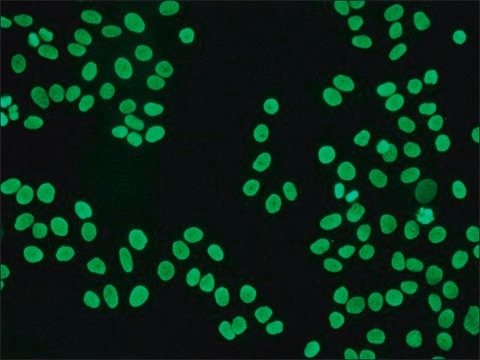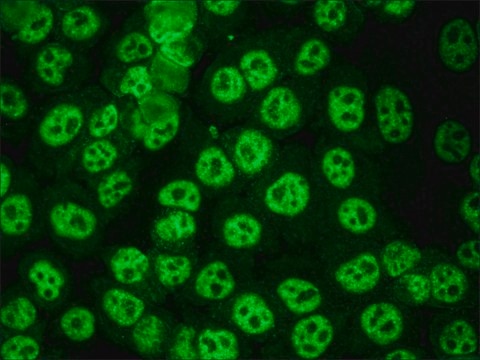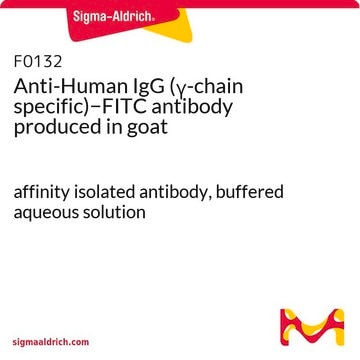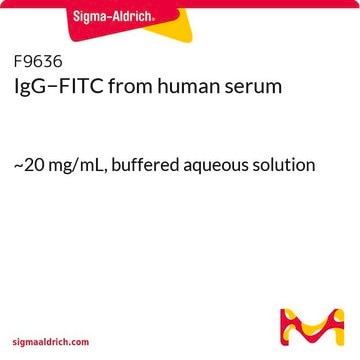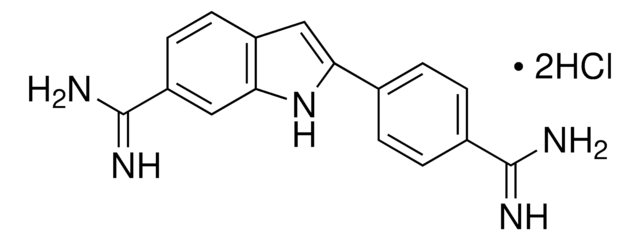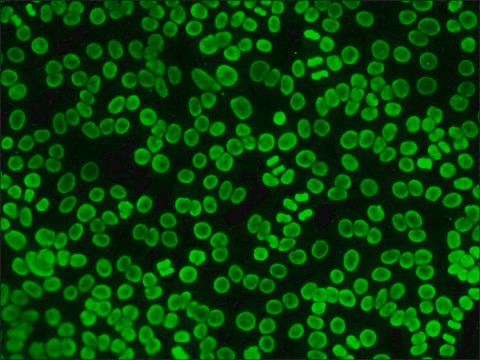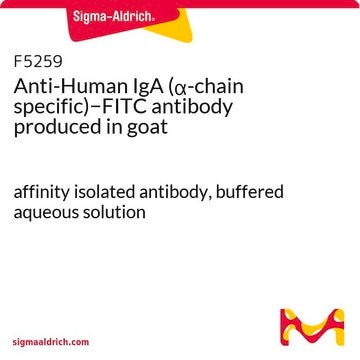F6380
Anti-Human IgG (γ-chain specific)−FITC antibody produced in goat
IgG fraction of antiserum, buffered aqueous solution
Sign Into View Organizational & Contract Pricing
All Photos(1)
About This Item
Recommended Products
biological source
goat
conjugate
FITC conjugate
antibody form
IgG fraction of antiserum
antibody product type
secondary antibodies
clone
polyclonal
form
buffered aqueous solution
technique(s)
direct immunofluorescence: 1:32
storage temp.
2-8°C
target post-translational modification
unmodified
Looking for similar products? Visit Product Comparison Guide
Related Categories
General description
IgG antibody subtype is the most abundant serum immunoglobulins of the immune system. It is secreted by B cells and is found in blood and extracellular fluids and provides protection from infections caused by bacteria, fungi and viruses. Maternal IgG is transferred to fetus through the placenta that is vital for immune defence of the neonate against infections
Anti-Human IgG (γ-chain specific)-FITC antibody is specific for human IgG subclasses. Whole antiserum is fractionated and then further purified by ion exchange chromatography to provide the IgG fraction of antiserum. Goat anti-human IgG is conjugated to Sigma Fluorescein Isothiocyanate (FITC).
Anti-Human IgG (γ-chain specific)-FITC antibody is specific for human IgG subclasses. Whole antiserum is fractionated and then further purified by ion exchange chromatography to provide the IgG fraction of antiserum. Goat anti-human IgG is conjugated to Sigma Fluorescein Isothiocyanate (FITC).
Immunogen
Pooled normal human serum
Application
Anti-Human IgG (γ-chain specific)-FITC antibodymay be used for immunofluorescent labelling of human peripheral blood lymphocytes at a working antibody dilution of 1:32 or 1:130. was used to determine IgG isotypes on human RBC by exhaustive photon reassignment microscopy.
Physical form
Solution in 0.01 M phosphate buffered saline, pH 7.4, containing 15 mM sodium azide as preservative
Disclaimer
Unless otherwise stated in our catalog or other company documentation accompanying the product(s), our products are intended for research use only and are not to be used for any other purpose, which includes but is not limited to, unauthorized commercial uses, in vitro diagnostic uses, ex vivo or in vivo therapeutic uses or any type of consumption or application to humans or animals.
Not finding the right product?
Try our Product Selector Tool.
flash_point_f
Not applicable
flash_point_c
Not applicable
Certificates of Analysis (COA)
Search for Certificates of Analysis (COA) by entering the products Lot/Batch Number. Lot and Batch Numbers can be found on a product’s label following the words ‘Lot’ or ‘Batch’.
Already Own This Product?
Find documentation for the products that you have recently purchased in the Document Library.
U Specks et al.
Clinical and experimental immunology, 109(2), 286-295 (1997-08-01)
We have expressed conformationally intact, enzymatically active recombinant PR3 in HMC-1 cells (HMC-1/PR3 cells) that is recognized by C-ANCA. Here we directly compared the clinical utility of C-ANCA testing by indirect immunofluorescence (IIF) using HMC-1/PR3 cell cytospin versus polymorphonuclear neutrophil
B Pouvelle et al.
Nature medicine, 6(11), 1264-1268 (2000-11-04)
A common pathological characteristic of Plasmodium falciparum infection is the cytoadhesion of mature-stage-infected erythrocytes (IE) to host endothelium and syncytiotrophoblasts. Massive accumulation of IE in the brain microvasculature or placenta is strongly correlated with severe forms of malaria. Extensive binding
Ingrid J G Burvenich et al.
mAbs, 8(4), 775-786 (2016-04-01)
IgG has a long half-life through engagement of its Fc region with the neonatal Fc receptor (FcRn). The FcRn binding site on IgG1 has been shown to contain I253 and H310 in the CH2 domain and H435 in the CH3
J Gysin et al.
Infection and immunity, 67(12), 6596-6602 (1999-11-24)
We performed ex vivo experiments with Plasmodium falciparum-infected human placentas from primi- and multigravida women from Cameroon. All women, independent of their gravida status, had anti-chondroitin sulfate A (CSA) adhesion antibodies which cross-reacted with heterologous strains, such as FCR3 and
Irina B Torres et al.
Clinical transplantation, 28(10), 1148-1154 (2014-08-12)
Transplant glomerulopathy (TG) is the characteristic lesion of chronic antibody-mediated rejection (AMR). However, in some patients presents with no circulating HLA antibodies or C4d positivity. Patients with TG accomplishing criteria for chronic AMR were compared to patients with isolated TG.
Our team of scientists has experience in all areas of research including Life Science, Material Science, Chemical Synthesis, Chromatography, Analytical and many others.
Contact Technical Service